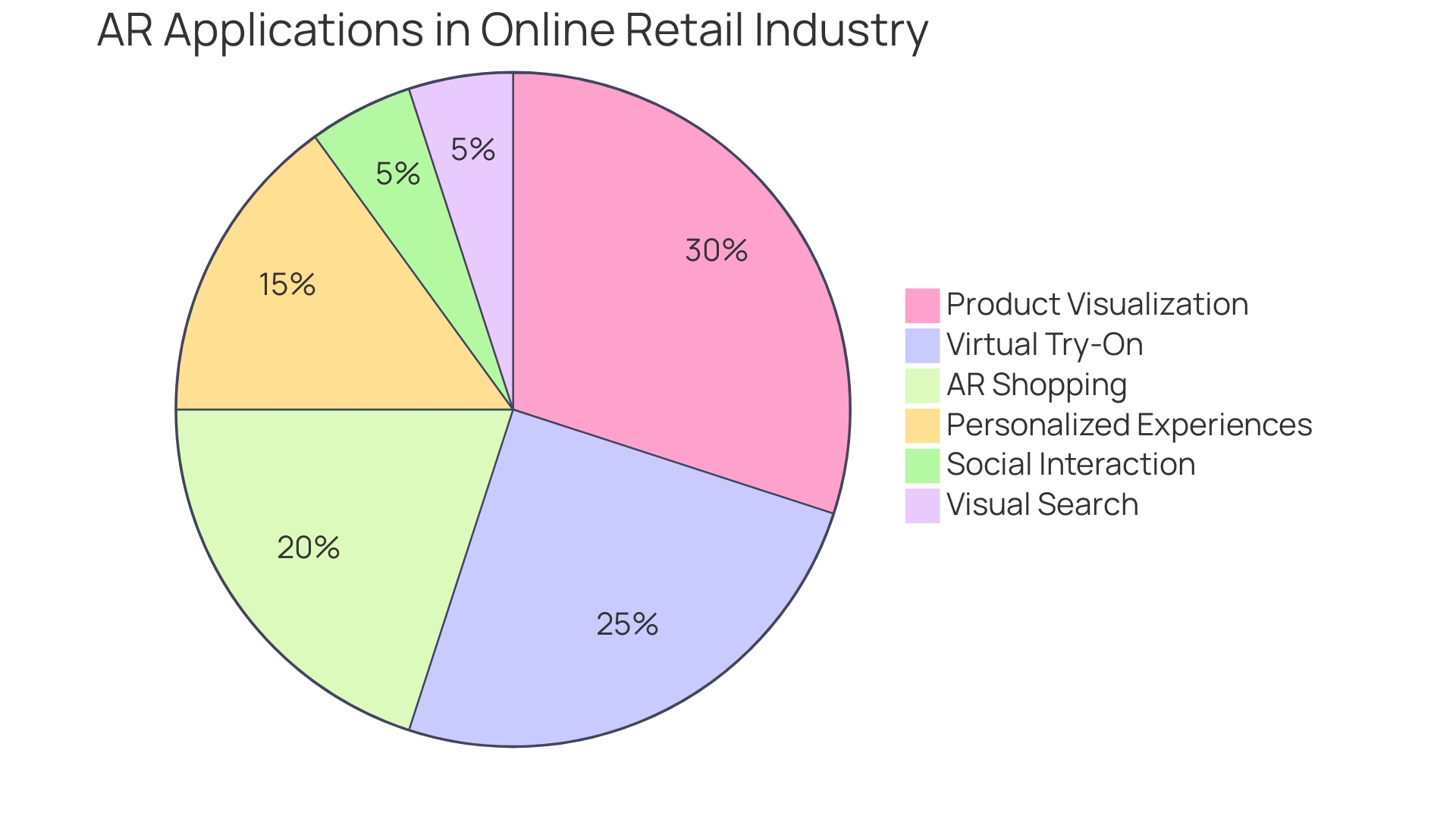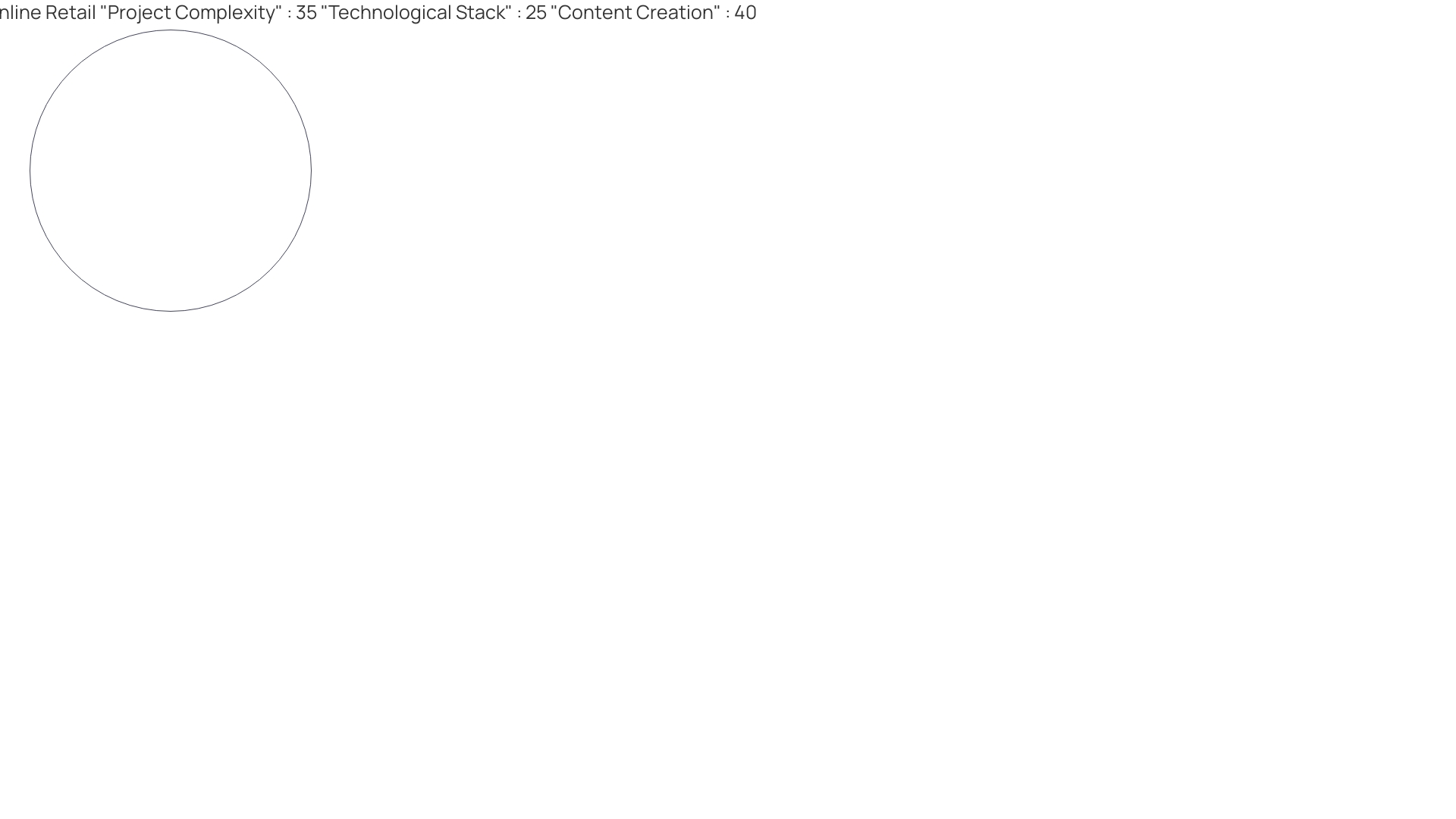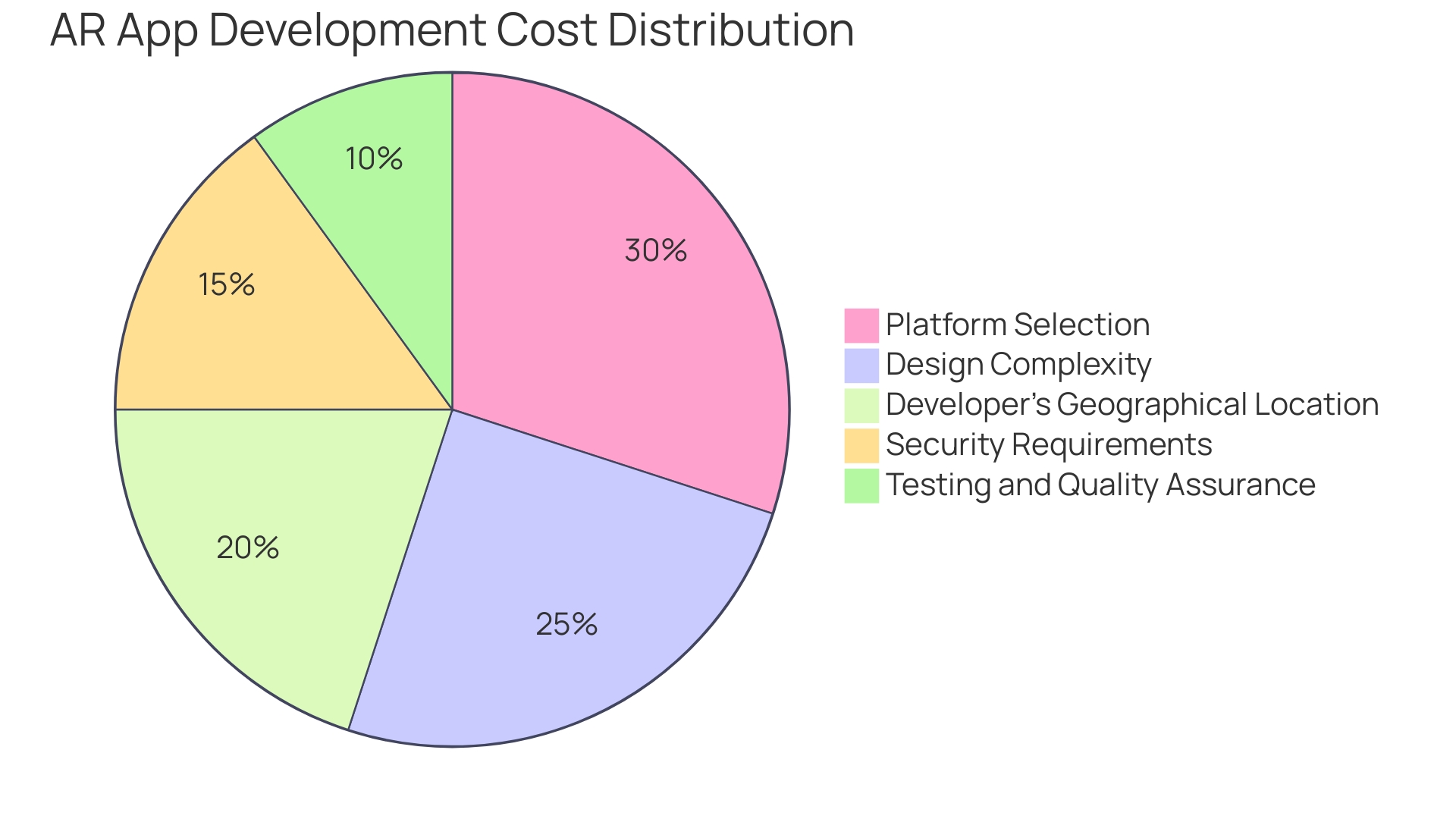Introduction
Augmented Reality (AR) is revolutionizing the online retail industry, providing immersive shopping experiences that go beyond traditional e-commerce boundaries. AR allows customers to interact with products in their own space, try on virtual clothing and makeup, and even visualize artwork on their walls.
This article explores the cost of implementing AR in retail, the different types of AR technology, factors influencing development costs, and the role of 3D content in AR projects. Additionally, it discusses the impact of additional functionality on AR app costs and provides insights on regional cost variations. By understanding the cost considerations and technological landscape of AR, businesses can make informed decisions to create personalized, efficient, and enjoyable shopping experiences for their customers.
Understanding the Cost of Augmented Reality Implementations
Augmented Reality (AR) is revolutionizing the online retail industry, offering immersive shopping experiences that transcend traditional e-commerce boundaries. Through AR, customers can interact with products in their own space, visualize artwork on their walls, or even try on makeup and clothing virtually.
This innovation is exemplified by Etsy's iOS app feature that uses AR to preview artwork in a user's environment, and the Cisco Store Xplorer AR app which personalizes the retail experience. AR not only enhances customer engagement but also addresses the significant challenge of product returns.
With AR's real-time try-on capabilities, customers are better able to assess fit and style, reducing the likelihood of returns. In the context of online shopping, where 55% of mobile traffic is from new visitors, AR offers a personalized and optimized experience that is crucial for capturing and retaining customers.
Retail is undergoing a transformation, as noted by freelance writer Ben Hancock, with AR at the forefront of creating more personalized, efficient, and enjoyable shopping experiences. Statistics show the pressing need for AR in retail, with typical online shopping behaviors leading to high return rates due to sizing issues. AR's ability to provide virtual try-ons is a game-changer, as seen with brands like Mecca and adidas. As the industry continues to evolve, a 50% increase in the use of AR and computer vision is predicted within the next year, indicating a shift towards more strategic technology investments that enhance the customer experience and drive sales growth.

Types of Augmented Reality: Marker-Based and Markerless
Augmented Reality (AR) is revolutionizing the shopping experience, allowing consumers to visualize products in their own space before making a purchase. There are two pivotal forms of AR: marker-based and markerless. Marker-based AR activates digital content through specific triggers like QR codes, transforming the physical world.
Conversely, markerless AR leverages advanced computer vision to detect and interact with the environment, no markers needed. This distinction is crucial as it influences the complexity and cost of AR solutions. For instance, MediaMarkt, Europe's largest electronics retailer, seamlessly blends digital and in-store experiences, adapting to consumer behavior that increasingly involves online research before in-store purchases.
Their approach exemplifies the potential of markerless AR in creating robust, omnichannel retail experiences. With the retail landscape shifting, as evidenced by the surge in online Dutch shops surpassing physical stores, integrating AR is a strategic move to enhance customer engagement and unify the online-to-offline journey. The growing popularity of AR in retail is paralleled by the expansion of mobile app usage in e-commerce, with platforms like Shein doubling their daily users.
This trend underscores the importance of immersive tech in attracting and retaining digital-savvy shoppers. AR not only captivates customers but also aligns with sustainable practices by optimizing inventory management and reducing the need for delivery trucks, as seen in MediaMarkt's in-store collection strategy. As the digital and physical realms converge, AR stands as a transformative tool for retailers to create compelling, environmentally conscious shopping experiences.

Cost Factors in AR Development: Complexity, Technology, and Content Creation
The investment in Augmented Reality (AR) for online retail hinges on various elements that influence the final development cost. At the heart of this cost analysis is the project's complexity.
More intricate AR experiences necessitate extended development timelines and additional resources, inherently driving up expenditures. The technological stack chosen to build the AR solution also plays a pivotal role.
Incorporating cutting-edge features demands advanced technology, which carries a higher price tag. Equally critical is the content creation aspect, involving the production of premium 3D models, animations, and interactive features, all of which require the expertise of seasoned professionals and the use of specialized software. These factors collectively determine the investment required for AR implementation, underscoring the importance of meticulous planning and strategic resource allocation to optimize costs while maximizing the AR experience.

AR App Development Costs: Examples and Estimates
Augmented Reality (AR) app development costs can differ significantly based on the intricacies and specifications of the project. For a foundational marker-based AR app, you might anticipate costs to be in the ballpark of $10,000 to $50,000.
However, if your vision includes more advanced features or if you seek to create a markerless AR experience with a high degree of customization, then the price tag can easily surpass $100,000. As the application's complexity escalates, so does the necessity for integrating sophisticated visual elements, third-party services, and enhanced security measures.
These elements not only increase user satisfaction by offering a seamless and engaging experience but also require additional development time and expertise, which contribute to the overall cost. Furthermore, the choice of platforms, whether it's Android, iOS, or both, and the decision to incorporate features like real-time chats or personalized offers, can also have a significant impact on the cost.
Industry insights suggest that retailers are increasingly acknowledging the importance of AR in providing immersive shopping experiences. This is not only to boost customer confidence in their purchases but to also address the growing trend of consumers facing hurdles when returning goods.
As such, investing in AR can potentially decrease return rates by offering customers a better understanding of how products fit into their lives. Moreover, the geographic location of your development team can also influence the cost.
For example, the UK boasts a large pool of app programmers, while Eastern European countries like Ukraine offer a balance of cost and quality. It's worth considering outsourcing to regions that provide skilled developers at a competitive rate. In terms of market trends, recent shifts in mobile app usage underscore the dynamic nature of consumer behavior. Companies like Temu and Shein have seen substantial growth, highlighting the need for businesses to stay ahead with innovative solutions like AR to retain and grow their user base. To summarize, the cost of AR app development is variable and dependent on a multitude of factors including app functionality, design complexity, security requirements, and the developer's geographical location. A thorough analysis of these factors will provide a more precise estimate for your AR project.

The Role of 3D Content in AR Projects and Its Impact on Cost
The creation of 3D content is a cornerstone in crafting compelling augmented reality (AR) experiences that captivate users. The intricacy of 3D models, animations, and interactive features not only enriches the immersion but also influences the financial investment required for AR projects.
Expertise in design and the use of advanced software are prerequisites for generating high-caliber 3D content, which may elevate project costs. The extent and complexity of the 3D content needed are directly proportional to the resources expended, thus affecting the overall budget.
Marcus Torchia, research vice president at IDC's Data and Analytics Group, underscores the importance of aligning technology strategies with industry-specific use cases, which is pivotal in the AR/VR Spending Guide. This alignment is crucial for enterprises looking to invest in AR, as it ensures that the technology is aptly suited for the intended application, maximizing both efficiency and impact. In the context of industry leaders like Rivian, who are at the vanguard of innovation and sustainability, the deployment of AR can be instrumental in achieving more rapid and eco-friendly processes. By considering these factors, businesses can confidently approach AR implementation, leveraging best practices and comprehensive market insights provided by resources such as Artillery PRO to optimize their investment.
Additional Functionality and Its Effect on AR App Costs
Augmented Reality (AR) integration in online retail has seen a considerable surge, with businesses keen to enhance the shopping experience and streamline operations. When venturing into AR, it's essential to judiciously select functionalities that are not only aligned with your business objectives but also considerate of your budget.
For example, the development of Etsy's AR feature for wall art required a complex regex-based parser to extract product dimensions from various text fields, a testament to the intricate nature of such implementations. Furthermore, with the advent of 5G, which is set to reach 660 million smartphones by next year, the potential for AR experiences is amplified, offering higher speeds and more robust connections.
Companies like Apple and Qualcomm are already capitalizing on this technology, indicating a trend towards more immersive and responsive AR applications. As we navigate the terrain of AR implementation, understanding the regional cost variations is crucial. For instance, the cost per install (CPI) rates in North America are traditionally higher than in EMEA, which accounts for about 50% of worldwide app ad sales. This information is pivotal when planning your AR strategy, ensuring you deploy resources effectively to maximize return on investment and set your enterprise AR to succeed from a place of confidence and knowledge.
Conclusion
In conclusion, Augmented Reality (AR) is revolutionizing online retail by providing immersive shopping experiences. Customers can interact with products in their own space, try on virtual clothing and makeup, and visualize artwork on their walls. AR not only enhances customer engagement but also addresses the challenge of product returns.
There are two forms of AR: marker-based and markerless. Marker-based AR uses triggers like QR codes, while markerless AR leverages advanced computer vision. Integrating AR into retail enhances customer engagement and unifies the online-to-offline journey.
The cost of implementing AR depends on complexity, technology stack, and content creation. More intricate experiences require advanced technology and premium 3D models, increasing costs. AR app development costs vary based on project specifications.
Foundational marker-based apps can cost $10,000 to $50,000, while advanced markerless experiences can exceed $100,000. Factors like visual elements, third-party services, platform choice, and additional features impact costs. Creating high-quality 3D content is crucial for compelling AR experiences.
Expertise in design and advanced software are necessary for generating immersive content. When implementing AR, businesses should select functionalities aligned with objectives and consider regional cost variations for effective resource deployment. By understanding the cost considerations and technological landscape of AR in retail, businesses can create personalized shopping experiences that reduce return rates and optimize inventory management while staying ahead in an evolving market.
Experience the future of online shopping with our cutting-edge Augmented Reality solutions!





